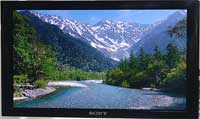Difference Between Plasma and Led TV

Plasma television supplies the most excellent contrast ratios, color, and motion in high definition television. The pixels manage the color and brightness, granting the plasma TV a more shadowy element, better angle views, wider extent of field, and polished transformation. Plasma TVs have a more acceptable picture than the LCD and LED TVs. They have greater quality for viewing at an angle, leaving images solid and colorful in large scope viewing angles.
Plasma TVs use a flat, thin expanse, or sheet of miniscule individual plasma cells, that produce a picture with the application of an electrical charge. It can fully deactivate the source of light off segments of the screen. This leaves some sections of the screen totally dark, while other sections in dazzling color. Plasma television is largely more economical in terms of cost per size and quality. However, plasma absorbs more energy than LED and LCD, and in most cases, it is heavier than LED.
Edge-lit LEDs are the slimmest televisions. They are excellent for wall enhancement. It’s low profile makes it look more like a beautiful painting, rather than a home theater set up. It uses liquid crystals, and backlight from hundreds of light-emitting diodes, in place of fluorescent lamps. The quality level of backlit LED can adjust the brightness, producing a blacker black. This great bright light, emitting diode backlit, rewarded LED it’s win over plasma in terms of brightness. It can be equally distributed at the back of the TV’s panel, or at the edges of the screen to make a very thin frame. It allows higher contrast ratios and lower energy consumption.
The new 120Hz and 240Hz refresh rate of LED TV was used to make the conversion rate faster. LED is as safe to use as a computer monitor. Although it is also safe to play video games on a plasma television. The backlit is easier to control than the pixels of the plasma, which gives LED an advantage over plasma. However, LED is more expensive than plasma and LCD televisions.
Summary:
1. Plasma has a more acceptable picture than LED.
2. Plasma is more economical in terms of cost per size than LED.
3. LED is lighter than Plasma.
4. LED consumes less energy than the Plasma.
5. Led looks like an excellent wall decoration, rather than a home theater set.
6. Plasma has higher contrast ratios than LED.
7. LED is brighter than the Plasma due to its bright light emitting diode.
8. LED is as safe to use as a computer monitor, whereas the Plasma is not.
- Difference Between EIDE and SATA - February 3, 2010
- Difference Between HTM and HTML - January 27, 2010
- Difference Between Grey and White Matter - January 27, 2010

Great post and clarity on the recent confusion surrounding the plethora of new technologies in the TV industry. After much research, I would say that LED TVs are at the forefront of today’s technology, especially those from my client, Sharp.
Great article but LED cannot match the film-like quality a plasma screen creates. Personally, whenever I see a well-produced blockbuster film, I find the amateurish home camcorder quality that LED screens produce disturbing. The movie quality and depth-of-field are certainly lacking. Plasma TVs have also become thinner, lighter and more energy efficient, and continue to improve.
(as a side note, in terms of proper spelling and grammar in a reputable online article, it would be most appreciated if the plural of TV is observed as “TVs” (not “TV’s” which is a possessive form) Other correct forms in the article ought to be “LEDs” and “”Its” low profile makes it look more….”)
I was distracted by the punctuation errors, and I was even confused the first time you used “it’s”. I thought you were saying, “it is low profile…”, but you simply had used the incorrect punctuation. The contraction for the words “it is” uses an apostrophe to make the word “it’s”. The way you meant to use the word is simply “its” without an apostrophe.
I would have thought by now, after one person commented over six months ago, you might have corrected these errors.
I enjoyed reading this article, as it was able to bring to light some of the less commonly known facts about the TV industry. The minor grammer errors didn’t lessen my enjoyment, and I hope that other viewers can read this with a mature enough outlook to not leave an annoying comment over grammer.
Don’t be a grammer nazi.
After writing if we recheck it for grammar and content then it is good for all of us because it does not harm us but improve us. All of us do mistake. Better to admit and improve those mistake instead of give reason for it or ridiculing critic. It also necessary for critic to appreciate good thing while criticizing on some specific point.
a very good article which gives a lot of information about lcd , led and plasma
Yes I agree.. BTW how’s 2011 going on there right now? Now here 2018 is still fine. Nothing much has changed.
I really enjoyed reading the post. In fact the explanation given in the article was exactly the answer l needed. Good job done.
I really enjoyed the post. I make mistakes all the time I don’t think we need to pick apart some one’s work after they went through the time and trouble to post this for the rest of us that just want info. thank you